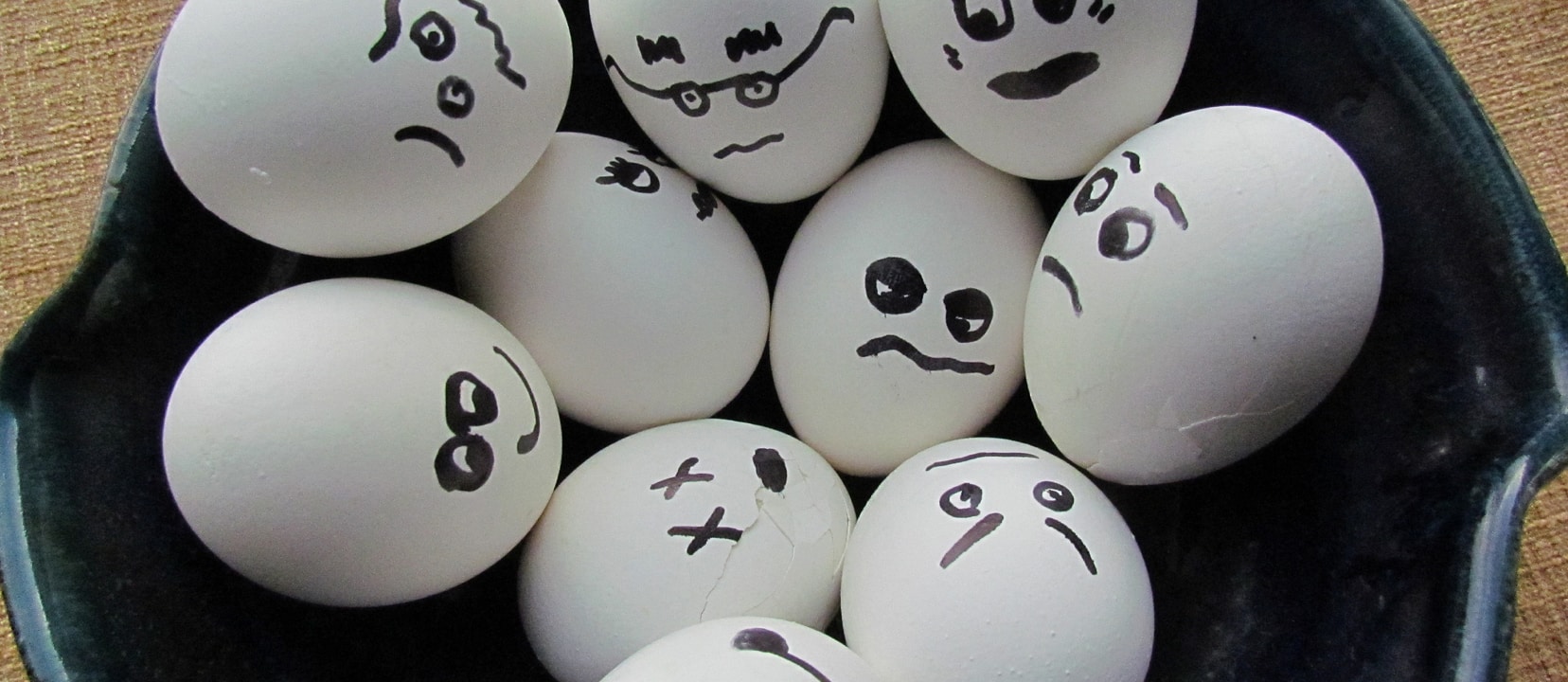Blood cholesterol levels are clearly increased by eating dietary cholesterol. In other words, putting cholesterol in our mouth means putting cholesterol in our blood, and it may also potentiate the harmful effects of saturated fats, meaning when we eat sausage and eggs, the eggs may make the effects of the sausage even worse. If you eat the saturated fat and cholesterol found in two sausage and egg McMuffins every day for two weeks, your cholesterol would shoot up nearly 30 points. If you eat about the same amount of saturated fat without the cholesterol, some kind of cholesterol-free sausage McMuffins without the egg, what would happen? Now the egg would have saturated fat too; so, to even it out, we have to add three strips of bacon to the comparison. Same saturated fat but two-eggs-worth less cholesterol would bump us up only around five points. So, saturated fat may increase fasting cholesterol levels more than dietary cholesterol, but especially in the presence of dietary cholesterol.
And this is measuring fasting cholesterol, meaning the baseline from which all our meal-related cholesterol spikes would then shoot. Heart disease has been described as a postprandial phenomenon, meaning an after-meal phenomenon. Milky little droplets of fat and cholesterol, called chylomicrons, straight from a meal can build up in atherosclerotic plaques just like LDL cholesterol. So, what happens after a meal that includes eggs?
In my video How the Egg Board Designs Misleading Studies, you can see what happens to the level of fat and cholesterol in our blood stream for the seven hours after eating a meal with no-fat, no-cholesterol. There are hardly changes at all. But when you eat a meal with fat and more and more egg, triglycerides and blood cholesterol shoot up.
That’s the kind of data that’s bad for egg sales; so, how could you design a study to hide this fact?
What if you only measured fasting cholesterol levels in the morning, seven hours after supper? You wouldn’t see a big difference between those that ate eggs the night before and those that didn’t. As the lead investigator of a study which compared the cardiovascular health effects of smoking versus eating eggs pointed out, measuring fasting cholesterol is appropriate for measuring the effects of drugs suppressing our liver’s cholesterol production, but not appropriate for measuring the effects of dietary cholesterol. After a cholesterol-laden supper, our arteries are being pummeled all night long. Then, think about what’s happening during the day. There may be only four hours between breakfast and lunch. So, if we had eggs for breakfast, we’d get that big spike and by lunch start the whole cycle of fat and cholesterol in our arteries all over again. So, most of our lives are lived in a postprandial state, in an after-meal state, and the graph I show in the video shows that the amount of egg in our meals makes a big difference when it really matters—after we’ve eaten, which is where we spend most of our lives. So, that’s why when the Egg Board funds a study, they only measure fasting cholesterol levels of the next day.
Doctors are so used to testing fasting cholesterol levels to monitor the effects of drugs, they too often fall for these egg industry tactics hook, line, and sinker. Please share the video with anyone who tries to downplay the risks of eggs or dietary cholesterol in general.
The smoking study I mentioned can be found here: Eggs vs. Cigarettes in Atherosclerosis.
For more videos on eggs for those who just desperately cling to egg industry propaganda, please see a few of my latest:
- Eggs and Cholesterol: Patently False and Misleading Claims
- Who Says Eggs Aren’t Healthy or Safe?
- Debunking Egg Industry Myths
- Eggs and Arterial Function
For another jaw-dropper as to the gall of corporate interests to use the veneer of science to downplay the risks of their products, check out BOLD Indeed: Beef Lowers Cholesterol?
In health,
Michael Greger, M.D.
PS: If you haven’t yet, you can subscribe to my free videos here and watch my live year-in-review presentations Uprooting the Leading Causes of Death, More Than an Apple a Day, From Table to Able, and Food as Medicine.
